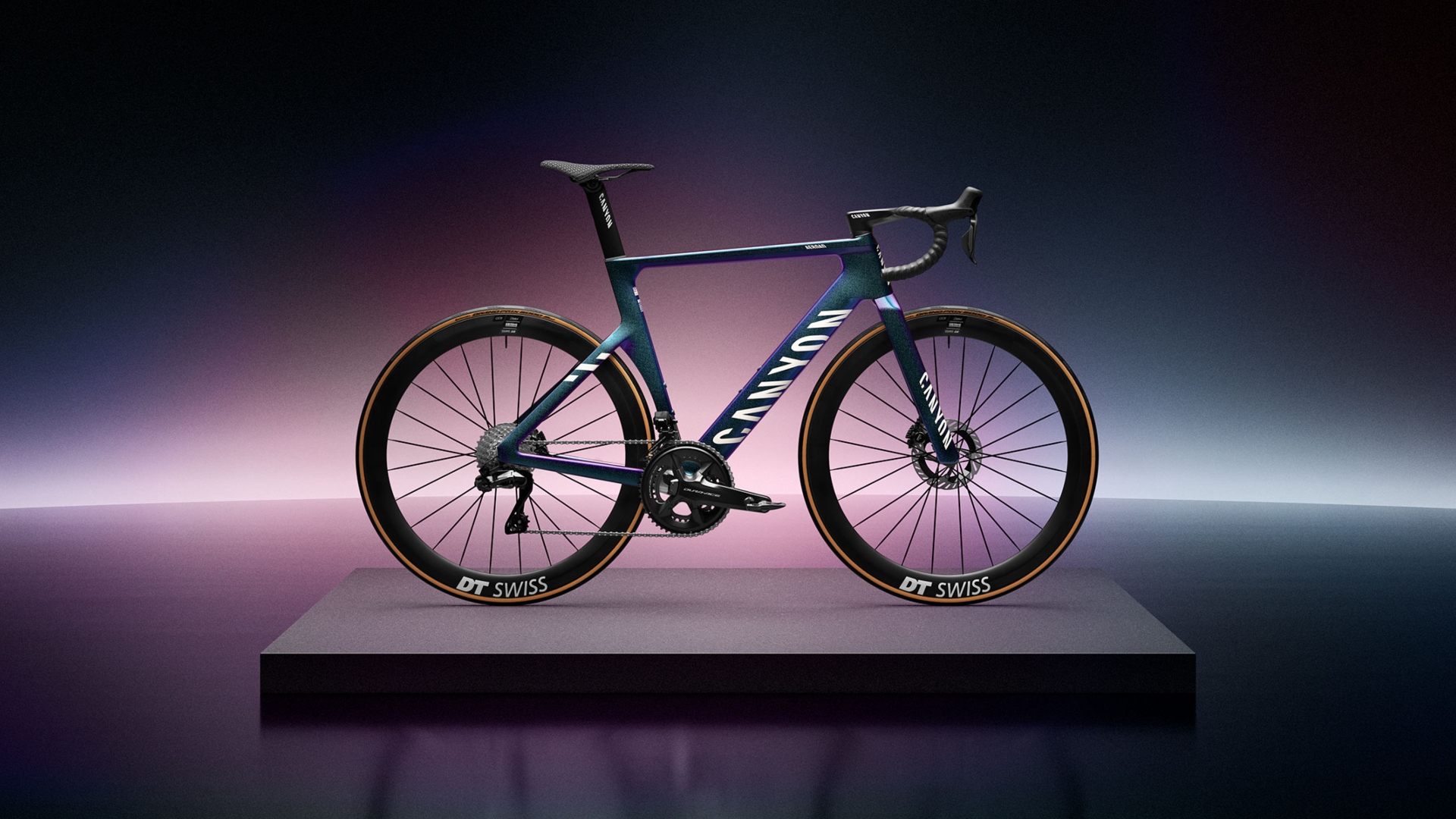
Canyon has officially released the latest iteration of its flagship race bike, the Canyon Aeroad.
The new bike is said to reclaim its former crown as the 'fastest bike in the peloton', but we think that it's the features Canyon isn't shouting about so much that warrant the most attention.
The new bike, we first spotted the new Canyon Aeroad at the Criterium du Dauphine earlier this year, has already taken three stage victories at this year's Tour de France.
We've been lucky enough to test the bike too, and have a first-ride review on the new Aeroad, so let's go over the details.
The 'fastest bike in the WorldTour'
A bike brand these days would rarely release a new model without it being 'more aero' than its predecessor, which would make it somewhat sacrilegious if Canyon released a slower 'Aeroad'.
Luckily, they haven't. The new Aeroad is indeed faster than its predecessor and unlike many bikes released in the last 12 months, it remains a thoroughbred aero bike.
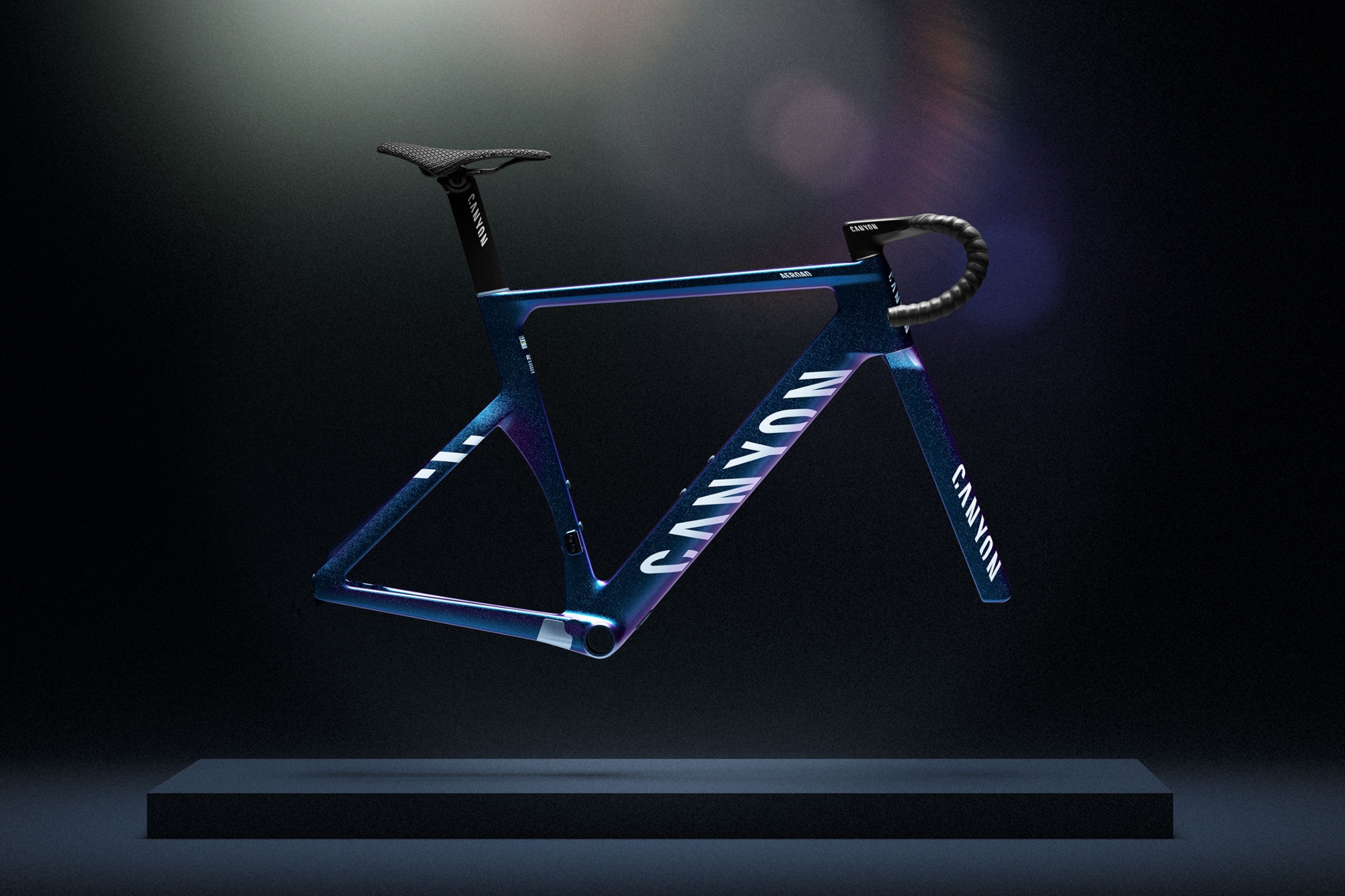
The new bike shares a remarkably similar silhouette to the outgoing Aeroad, however, there are a few important frame shape details that have helped Canyon to make it more aero.
Looking at the bike side on, you'll see that key areas at the front of the bike have been elongated back to front, such as the head tube, and fork blades. Conversely, the seat stays, seat tube, and seat post have all been on somewhat of a diet, and are now slightly smaller in size.
The head-on profile of the bike also reveals some aero trickery, in the shape of a much narrower headtube, which sees the downtube slimmed to meet it. The new frameset is actually heavier, 960g for a size M frameset (painted), but that doesn't stop range-topping models from weighing as little as 7.07kg.
The result of all this is a bike that is 1.6 watts faster than the previous Aeroad, at zero degrees of yaw angle. Yes, this is, of course, a minute improvement but these stats were arrived at with the standard handlebar - there are some far more impressive gains to come...
Canyon Pace Bar cockpit
Perhaps the biggest, most notable design evolution is the all new Canyon Pace Bar cockpit system, which now features interchangeable drops. More impressive still, is that the narrowest option saves 14 watts at 40 kmh!
For a few years now, Canyon has stocked the CP0018 cockpit on the Aeroad models, which is capable of width adjustment between 37 and 42cm thanks to four T25 screws underneath the bar - but with the Pace Bar, Canyon has taken this further.
The new three piece design now allows you to fully remove the 'bar ends' from the 'T bar stem', and Canyon now offers two shapes of handlebar, an 'Aero bar' and a 'standard bar'.

The aero bar is adjustable between 35 and 40cm, and in its narrowest position, I absolutely believe the 14-watt claim. We have carried out our own wind tunnel tests on ultra-narrow handlebars, and upon comparing testing protocols with Product Manager Sven Reuter, we were both pleasantly surprised at the rough correlation.
Aside from the aero gains, they also feature a 10mm increase in reach and a slightly flared drop section for added control on descents. They are said to be so easy to change too, with a home mechanic having the job done in 'around 20 minutes' thanks to some very clever cable routing.

However, there is one particular sticking point about these fantastic new bars, they can't customise your stem length or bar end shape at the point of sale, which does seem like a bit of a missed trick for a direct-to-consumer brand.
The T bar will be sold for €199.95 (UK and US pricing to follow), and the aero drops will retail for €229.95, meaning if you do want to change both of those things, you are talking about a significant extra cost.
I did ask Canyon whether it would consider making this an option, and I was told it is 'on their radar', but at this stage, there is nothing concrete set in place.
Leave your multitool at home
So it's faster for the pros - just - but I really don't think that's the most exciting part about the new Canyon Aeroad, because the German brand has also made the new model significantly more user-friendly for the everyday user.
Canyon has officially dubbed the Aeroad a 'bike for the cobbles', and to back this up, it has made a number of significant changes, which also make it far more reliable for the average user.
The first major change is that the old, problematic seatclamp has been ditched for a more standard two bolt affair. Instead of relying on seatpost flex for vertical compliance, the slimmed rear triangle adds a little bit more give - though as I found out while riding the bike, it's far from flimsy!
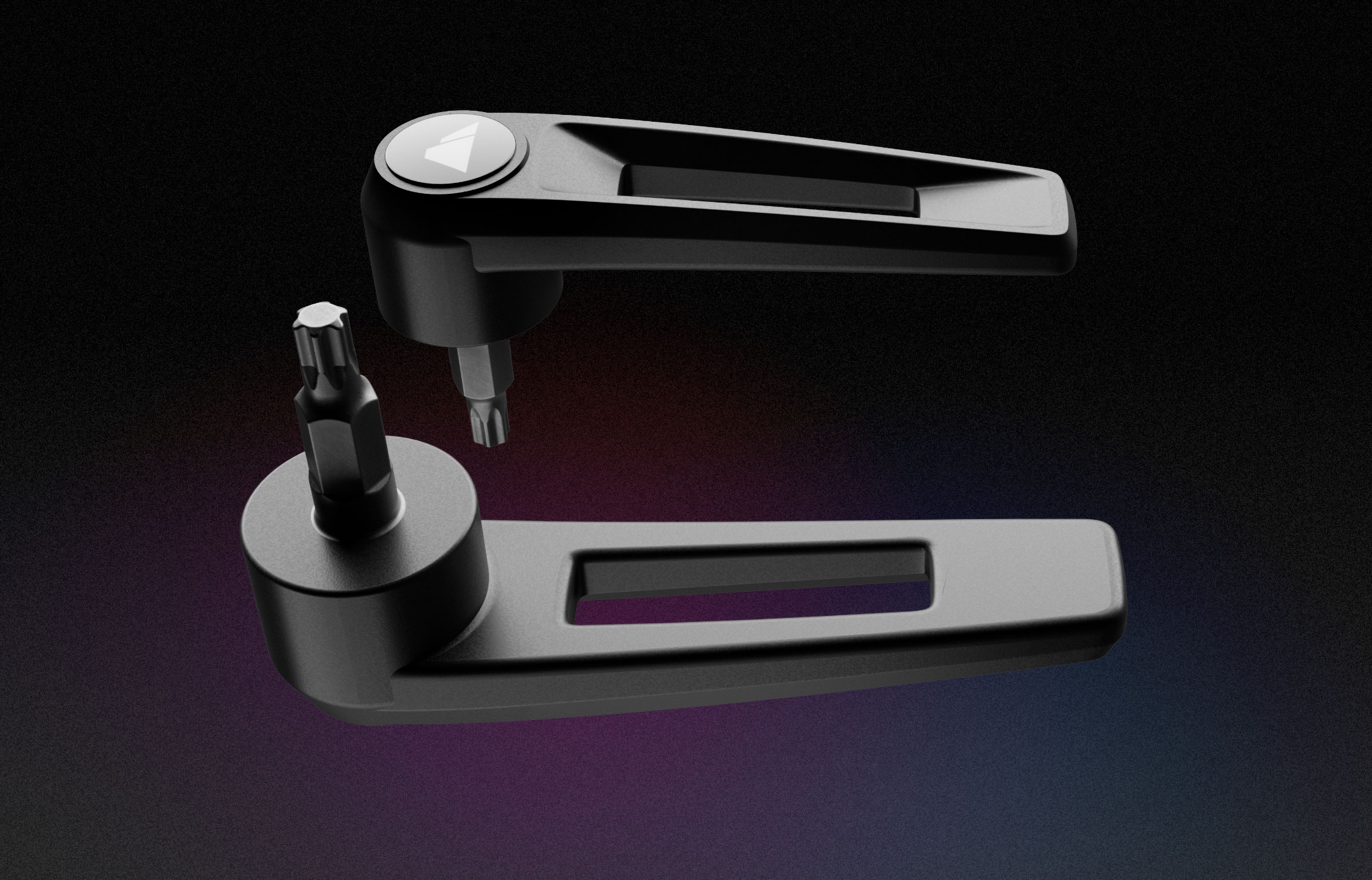
Best of all though, is that every single bolt you regularly come into contact with on the bike - we're talking seatpost, stem bolts, saddle clamp, etc - is now an easy to use, hard to round T25 Torx fitting.
Canyon outsourced the fastenings to a German company, which is renowned in the automotive space. Better still, you'll find a T25 bit in the end of the thru axle fastener, which means you literally don't need a multi-tool anymore for everyday riding.
Why no one has done this before (aside from the obvious cost implications), I do not know!
Next up is the headset. Canyon has revised the design, which now features hermetically sealed bearings, resulting in what the brand claims to be a 'pressure-wash-proof' system. While I haven't had the time, or lack of mechanical sympathy to test this thoroughly, I can say that the level of development that has gone into the headset seems impressive, and I look forward to seeing if a British winter can debunk the brand's claims.
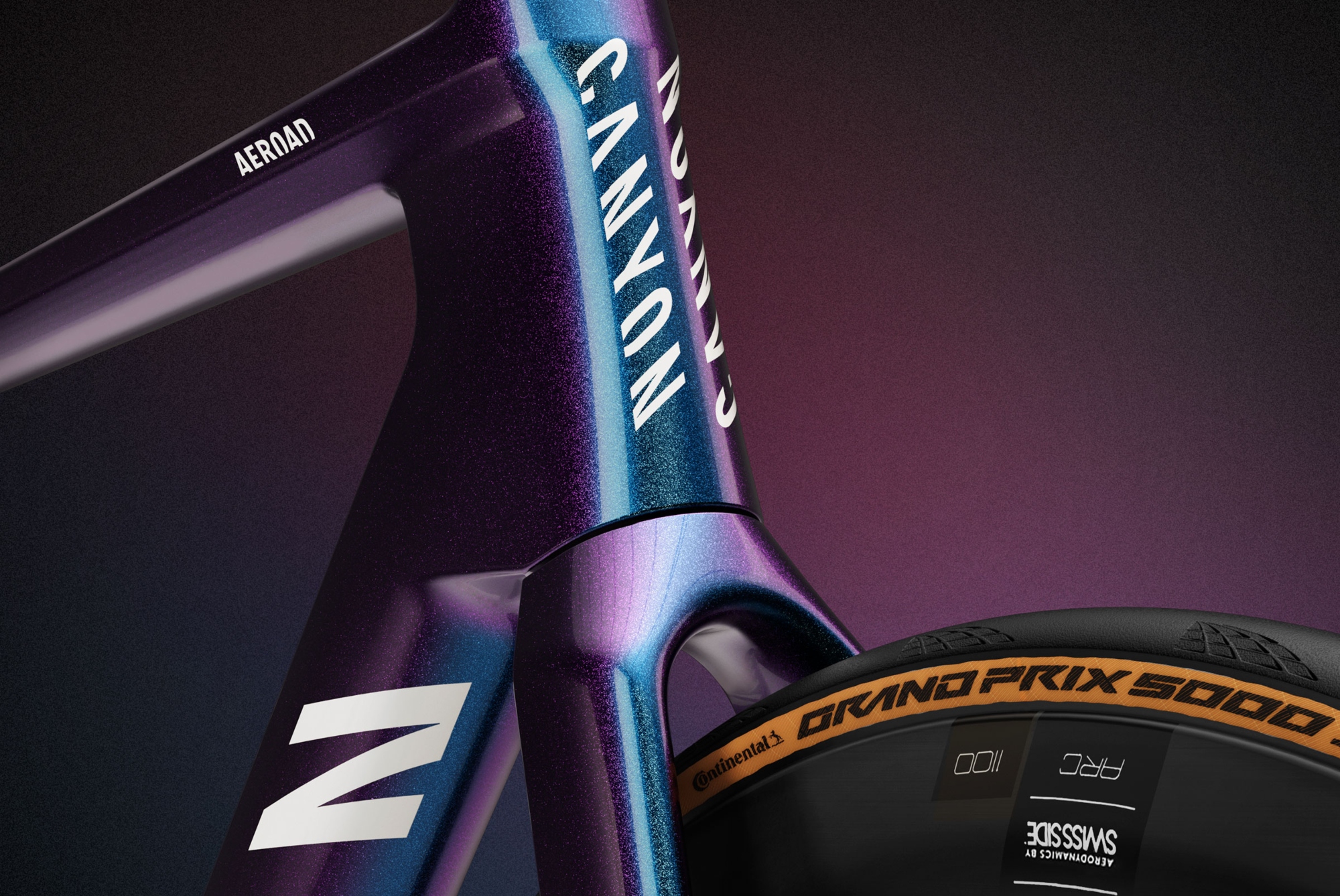
A final few little details include covered thru axle ports, which stops dirt ingress, an easy (yet proprietory) rear light mount, and a pair of fork blade tip protectors, meaning you can set the bike down without the front wheel in, and not worry about your paint.
Overall it's a set of changes that might not be quite so eye-catching on a spec sheet, but day to day, will be genuinely useful.
Pricing and Availability
The new Aeroad is released in two different frameset trims - the range-topping CFR frameset, and the second-tier CF SLX frameset.
CFR models will be stocked with top spec groupsets only, with Shimano Dura Ace Di2 models costing €9,999/ / , and Sram Red AXS models costing €10,499/ / .
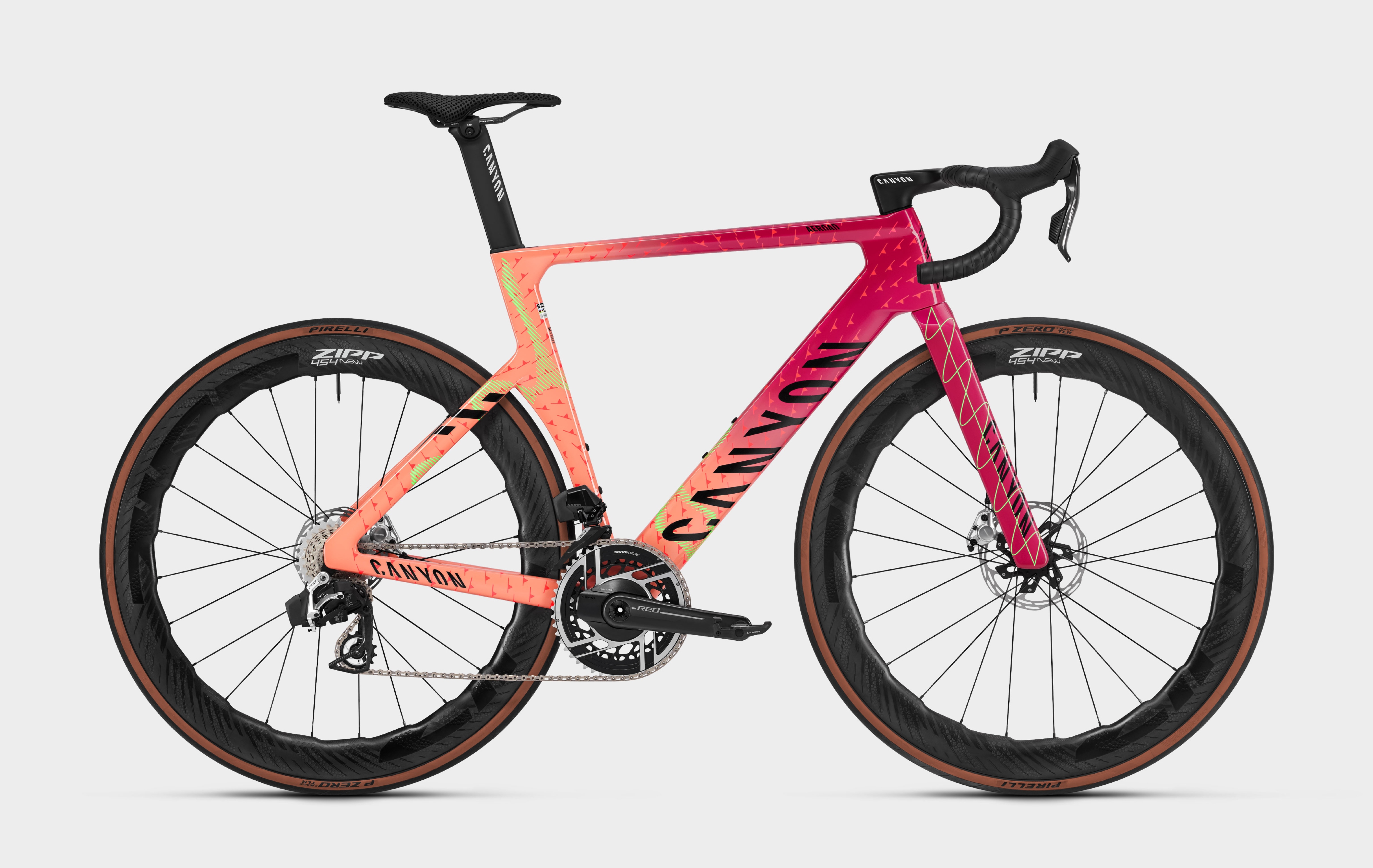
The CF SLX bikes, on the other hand, looks a little bit more enticing in terms of value for money.
Second tier framesets still receive the same new aero cockpit, however prices start from €4,199/ / for Sram Rival AXS models, and range up to €6,999/ / for the CF SLX, which is specced with Zipp 404 Firecrest wheels, and a Sram Force AXS groupset.
For more information on the new Aeroad, visit the Canyon website.







